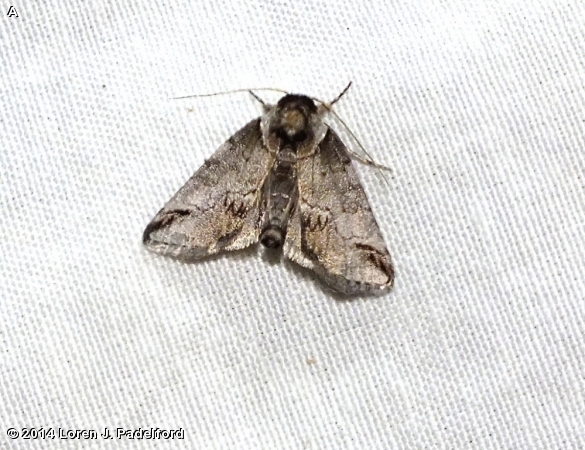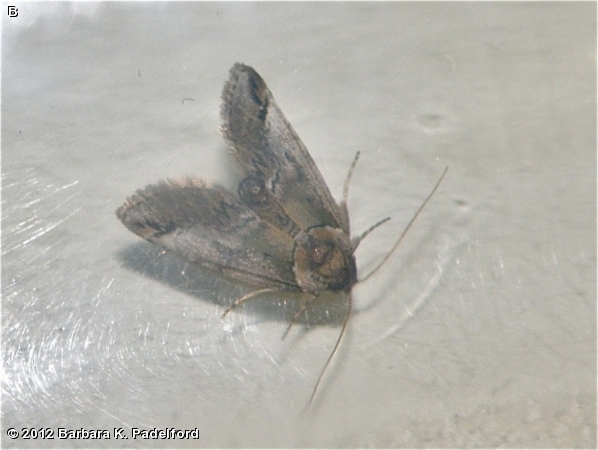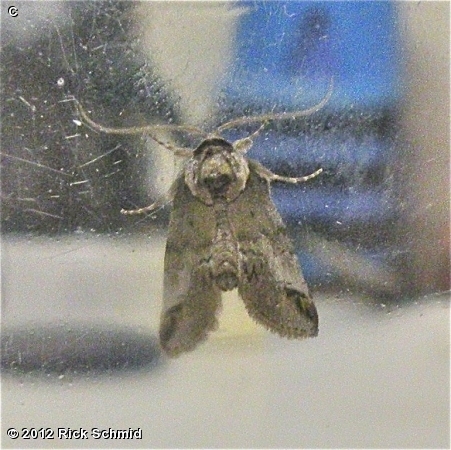
The Small Baileya has a wingspan of about 3/4 to 1 1/8 inches. The forewing is brown with an ashy gray median band. The subterminal band is wavy black with the outer section being almost straight. Two or more black dashes form the subapical patch. The hindwing is plain light brown. The similar Sleeping Baileya (B. dormitans) is distinguished from the Small Baileya by the thick, curved bulge of the subterminal line near the costa.
The frequency of occurrence of this moth at Fontenelle Forest and Neale Woods is not known. It has been photographed at Camp Brewster, Fontenelle Forest in mid August, 2012. The moths are attracted to artificial lights.
The larva feeds on leaves of walnut trees. This species overwinters as a pupa in an elongate cocoon which has chewed leaf fragments woven into it. Another common name is Tuft Moth. This moth was formerly included in the Noctuidae family. It is one of 6 North American families in the superfamily Noctuoidea.
Disclaimer: The content of NatureSearch is provided by dedicated volunteer Naturalists of Fontenelle Forest who strive to provide the most accurate information available. Contributors of the images retain their copyrights. The point of contact for this page is: Babs Padelford.


